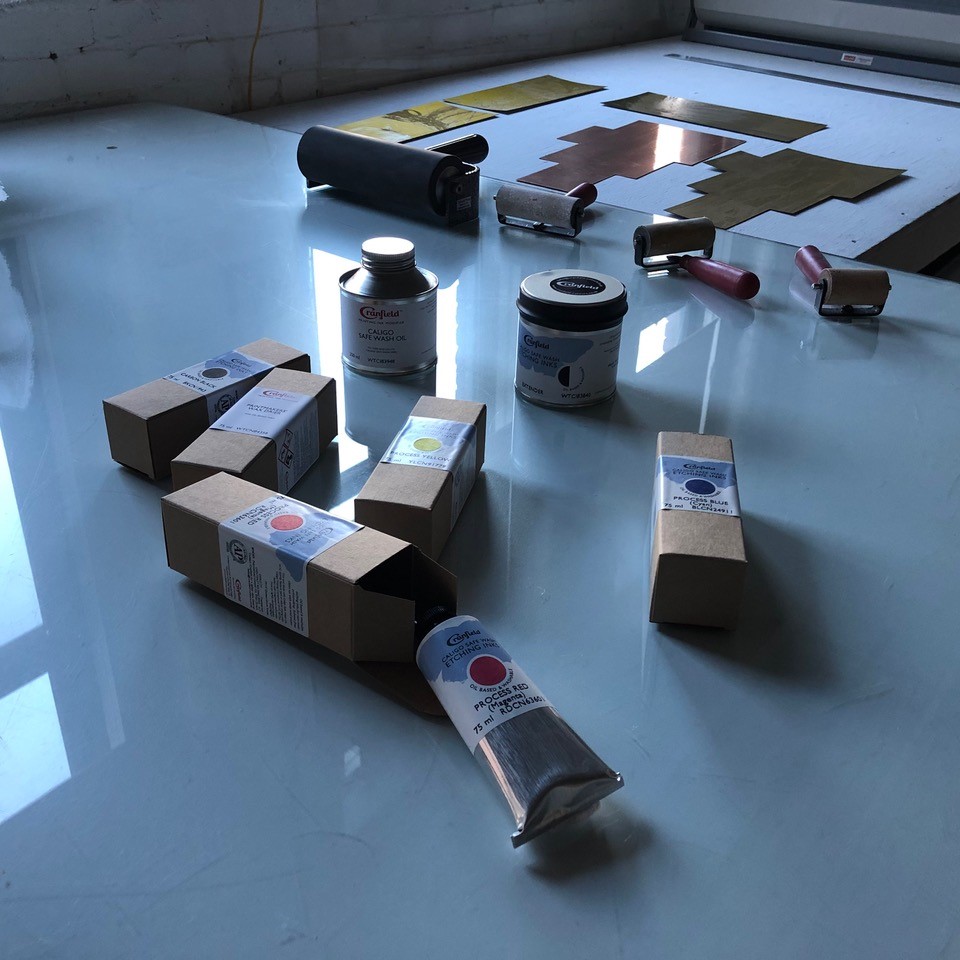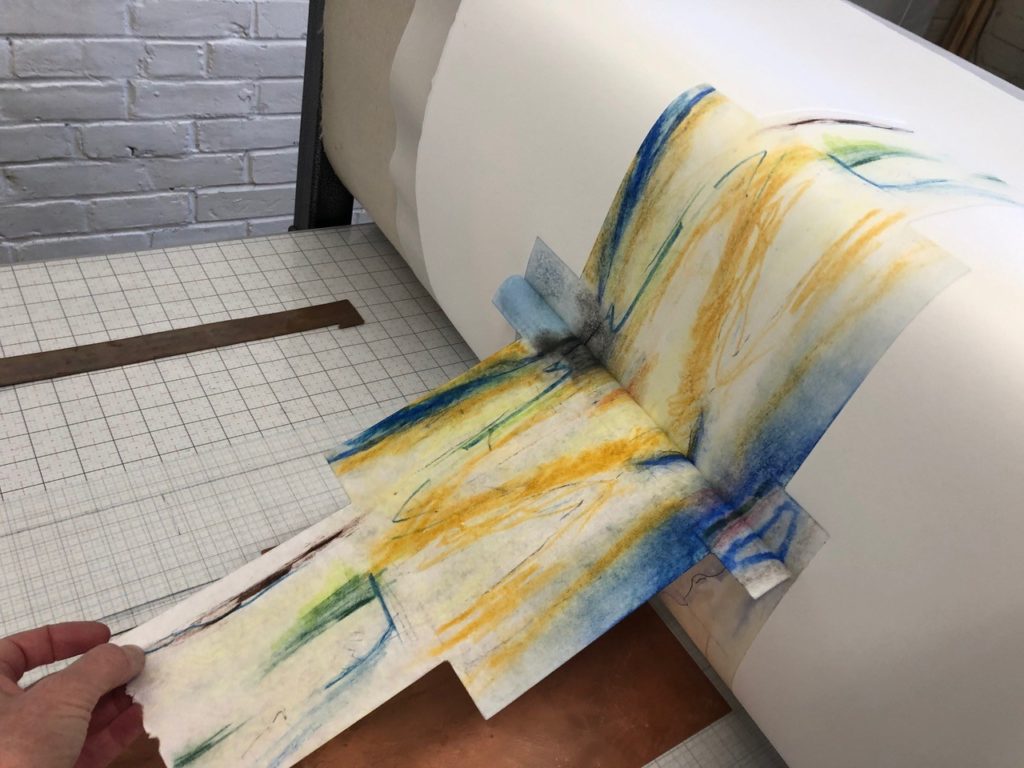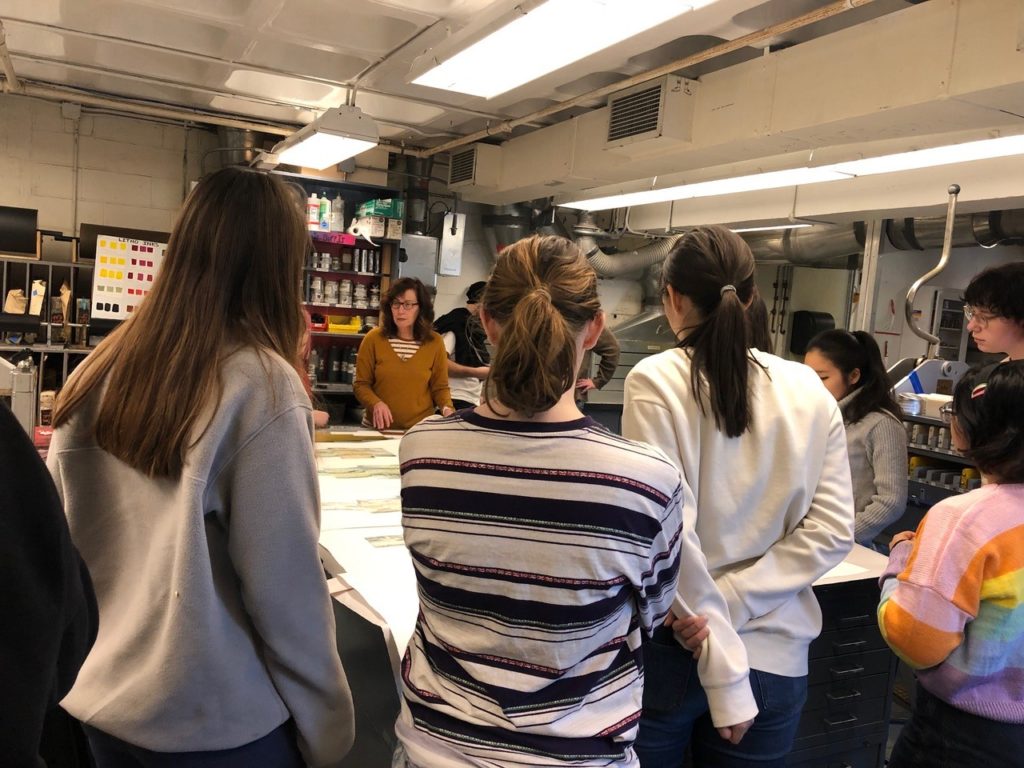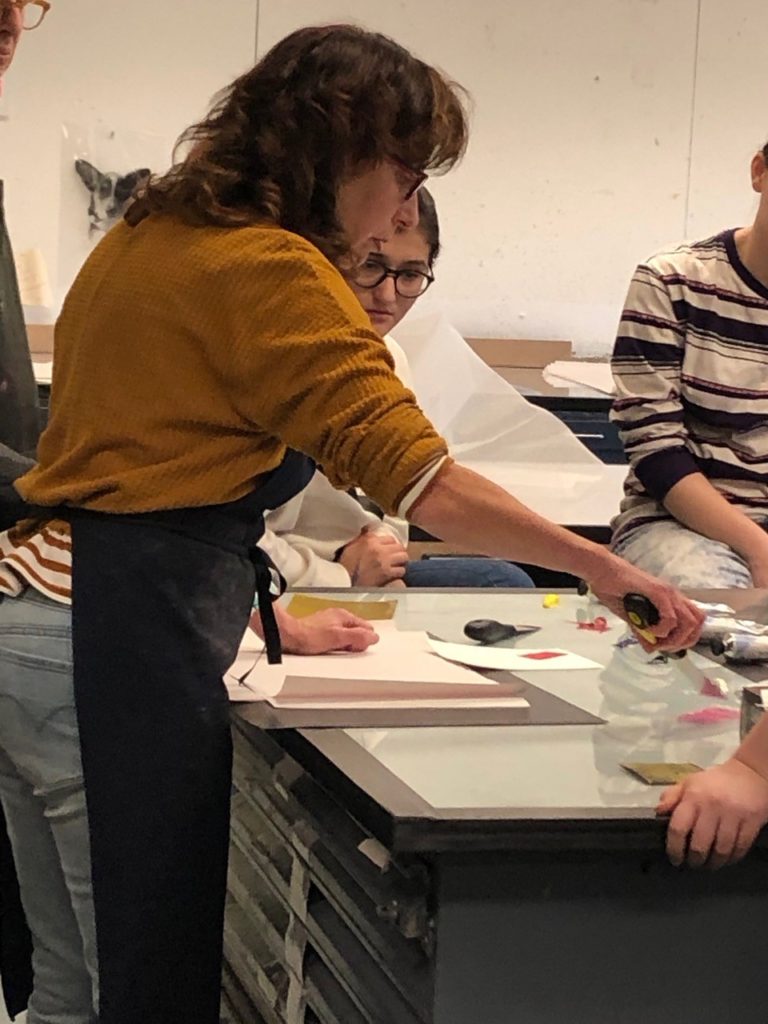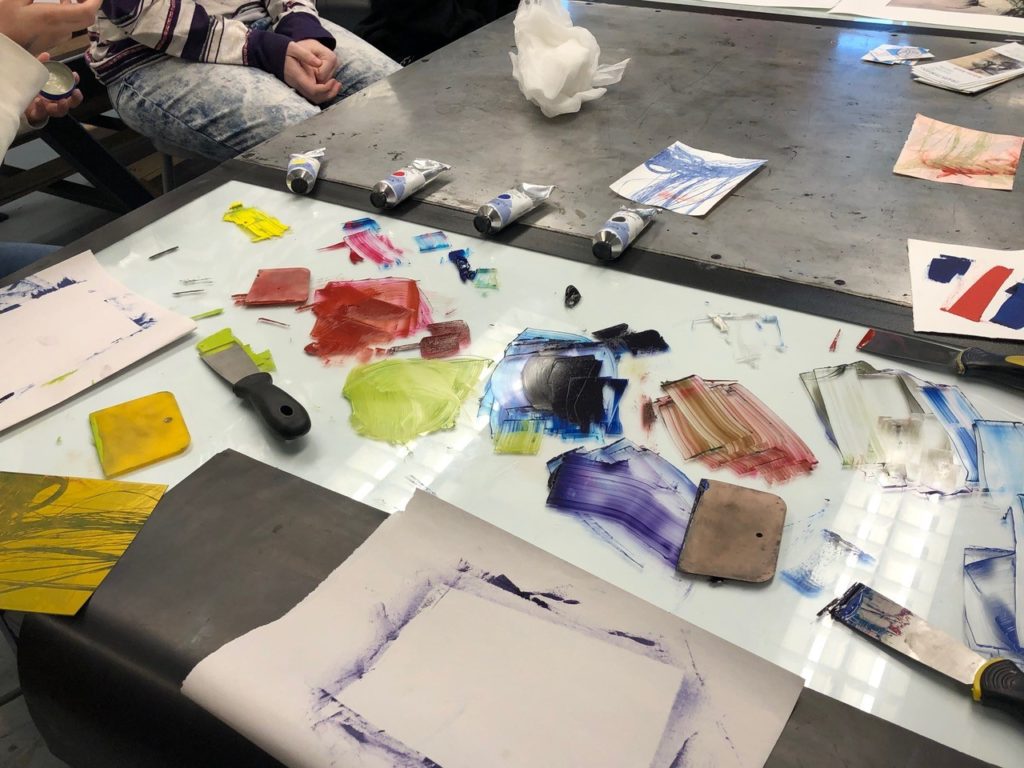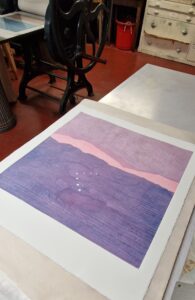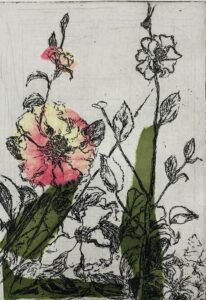I just returned from a great trip to Massachusetts, where I was an artist in residence and workshop instructor at Zea Mays Printmaking and a guest lecturer at the School of the Museum of Fine Arts/Tufts University.
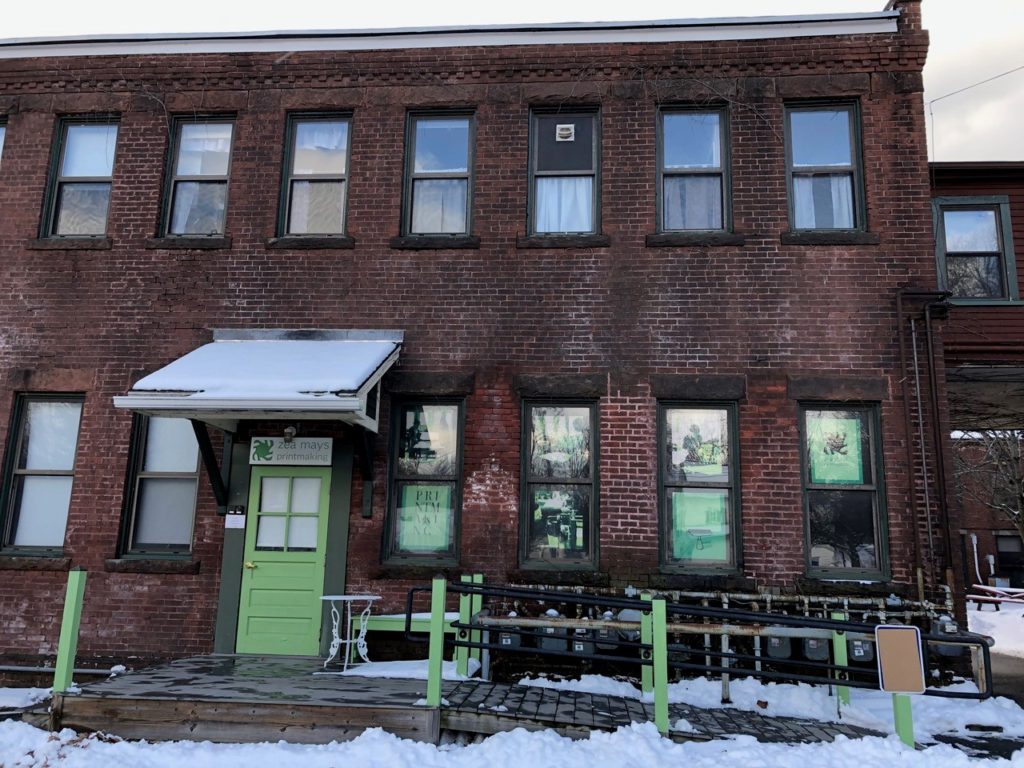
It is wintertime, and the cushy climate at my home in Aptos, California rarely gets below 40F (4C) degrees in the dead of a winter night. Snow fell once in Aptos in the early 2000’s. (About 1 inch fell, and people stopped in the middle of the road to take pictures. It was gone within the hour.) Shortly after arriving in Boston, thick white snow began to fall, and it continued all night.
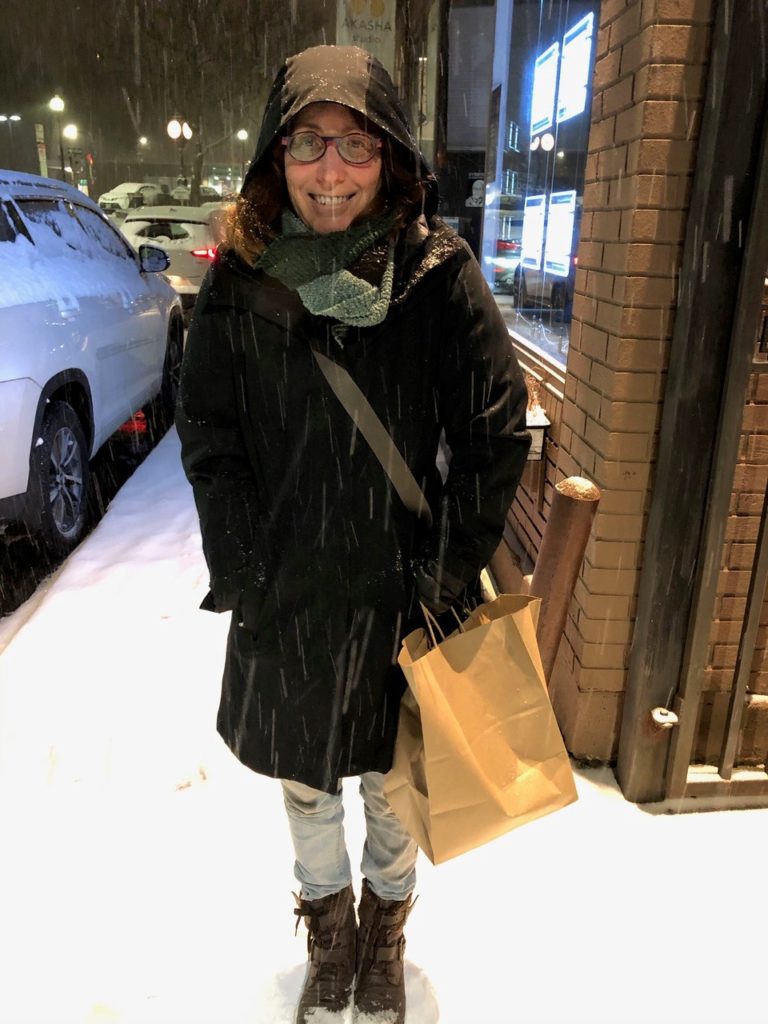
In the morning, the world was covered in 6” (15cm)of the stuff, and it was 7F (-13C) degrees. Adventure seeker that I am, I shoveled the driveway and was off to Zea Mays in the foothills of the Berkshire Mountains. As the temperature did not get above 20F (-6C) until my last two days there, I was able to revisit the weather of my childhood in New York, the main impetus for leaving the East Coast. Knowing that the weather was temporary this time, allowed me to enjoy it thoroughly. I tromped around in the white stuff taking pictures, cleared icy walkways and spent nearly all of my time in the studio, wrapped in scarves and cashmere sweaters. It was terrific!
The Caligo Safe Wash was waiting for me at Zea Mays, as was a beautifully
appointed studio with a Takach press the size of the Hindenburg.
I awoke early every morning and went right to the studio, working straight through the days and into the late nights. There was a local bar around the corner where I caught a beer or two while watching horse races on TV, and I did occasionally enjoy a meal, but pretty much I just worked. I brought some Solarplates with me, and with Liz Chalfin’s assistance, did some hard and soft ground etching with Baldwin’s BIG ground, on a copper plate that was designed to be printed over one of the Solarplates.
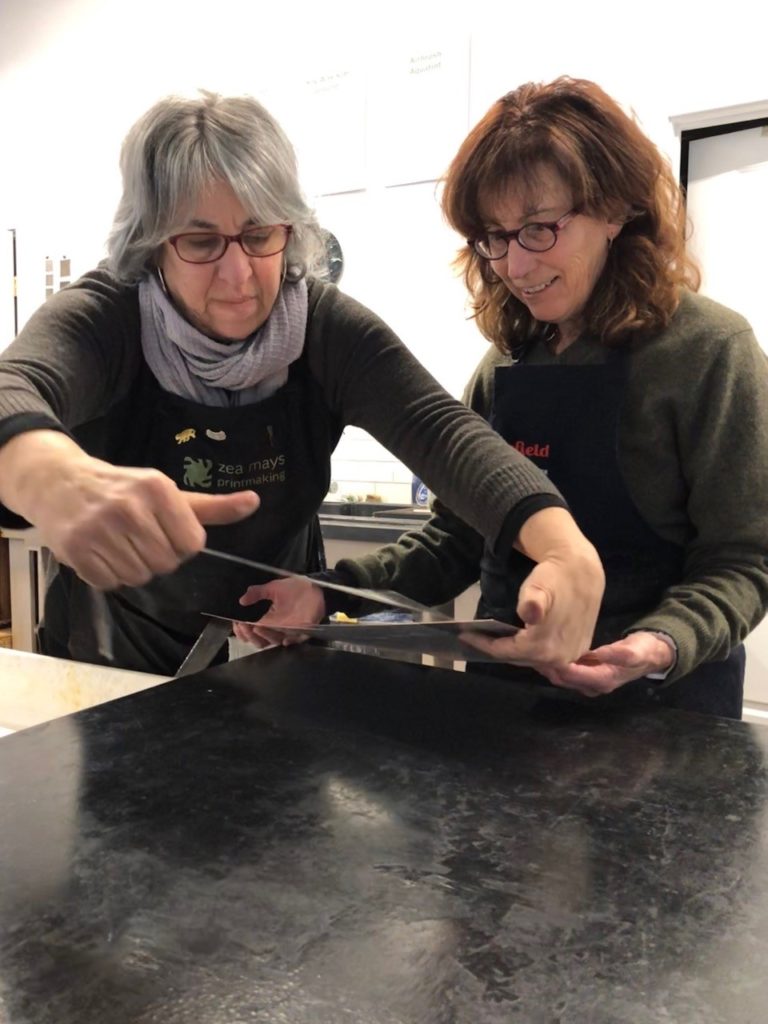
Printmaking indeed takes a village, so before I left California, I enlisted the help of Jonathon Wolf, my Photoshop Ace, to create the file to make the transparency for the Solarplate exposure. Once the file was created, Dr. Bob Rocco printed the transparency for me, as I had not yet calibrated my Epson printer for photopolymer. Once that was done, I had to figure out how to get the exposed and developed Solarplate and the raw copper plate cut in a precise, irregular shape. I queried sculptors, jewelers and printmakers, and settled on the 22-year-old grandson of a three-generation family owned fabrication business in the industrial section of Watsonville. He runs the waterjet cutter, which required an Illustrator file and a lot of luck to successfully cut both plates, one just slightly larger than the other, to hide any registration issues.
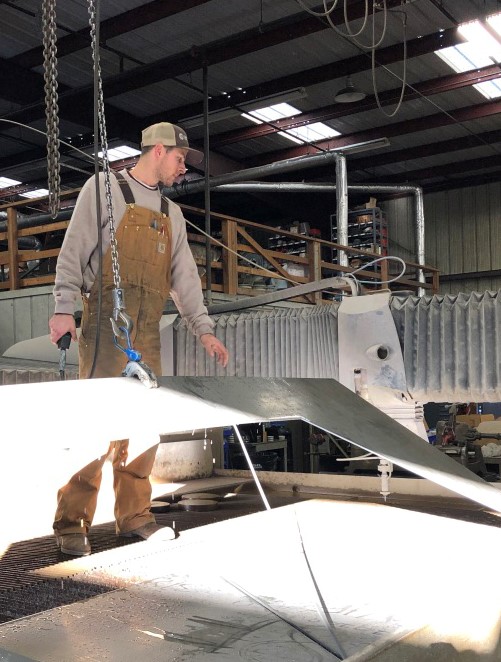
Once at Zea Mays, I used a registration method from Crown Point Press and began printing the plates. I inked them many, many ways with Caligo Safe Wash ink of course, including a third drop with a pastel transfer method that someone, somewhere must have taught me. I ended up with about a dozen versions of the image, all of which I like for one reason or another.
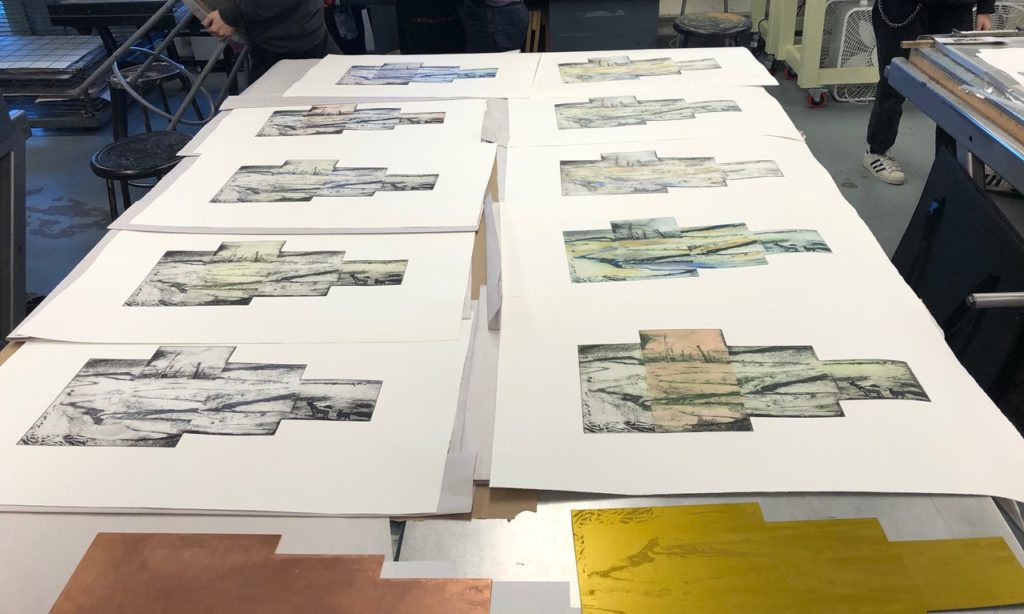
My printmaking “village” expanded to include the Zea Mays shop tech, Kevin Pomerleau, who prepped all of my prints for an overnight stay in the drying box, a major undertaking. Liz’s partner Sheldon Carroll then rigged up the box and the prints emerged the next morning, beautifully flattened and ready for the plane ride home. It was a true collaboration, with the prints becoming a record of the creative process.
In addition to making my own prints, I taught a very exciting pastel transfer workshop with nine artists ranging in age, artistic experience and geographic location. It was a great group, very interested and involved. Although the bulk of the pastel transfer technique involves the use of Safe Wash Extender only, I took a good deal of time demonstrating the use of Safe Wash process colors and discussing the unique properties of the inks. Along with the workshop participants, Zea Mays personnel and interns attended, so they are now able to disseminate the information to their members and printmaking colleagues. With the easy clean up, zero solvent factor, clarity of color, strength of the pigments and easy access through Dick Blick , people were very impressed. Personally, I am continually amazed at what a little color theory can do to excite and motivate a group of printmakers! All workshop participants have pledged participation in Print Day in May 2020, and Zea Mays will host and advertise a special event.
When I was a student at Rhode Island School of Design in the 1970’s, I took a semester off and attended what was then known as the School of the Museum of Fine Arts, Boston. During my one semester there, I took the only formal printmaking course of my entire education. It was a survey course in which I made one woodcut, one lithograph and something else I can’t remember. So it was particularly wonderful to go back as a guest artist. The school is now part of Tufts University, and as such, the program is far more rigorous and academically weighted than it was when I was there. The student body is enthusiastic and engaged. My host, printmaker and longtime faculty member Peter Scott, has created an exciting, welcoming shop environment, with faculty from other areas dropping by to check in throughout the day, bringing snacks and good cheer. Some local printmakers stopped in to check out the visiting artist. When we were introduced, one of them looked at me and said “I think we’ve met. Wait a minute, how do I know you? Oh, of course, you’re Print Day in May, aren’t you?” A fun moment, to be sure!
I presented a lecture about my work, showed them prints from the Zea Mays residency, and then tore into the Caligo Safe Wash demonstration. We began a discussion of color theory and the use of process colors, which I peppered with amusing anecdotes such as Sir Isaac Newton’s aversion to the number 6, which resulted in the spectrum having 7 named hues rather than 6.
They loved it all, and were amazed by the quality of the ink. I brought some small Solarplates with me, and we printed by consensus, the students calling out colors such as “lemon yellow” and “blood orange”, which I then mixed up and carded onto the plates. We printed and over printed, with Peter and I keeping up a friendly, familiar banter as we took turns at the wheel. The time flew, and soon we were engaged in a Safe Wash style clean up, which I promised would take under ten minutes. Another thing they loved! The printmaking program hosts an annual faculty/student print exchange at semester’s end. The curating of the prints takes place on the first Saturday in May, which, starting this year, will be the SMFA/Tufts annual contribution to Print Day in May! Additionally, Peter is on the board to the Boston Printmakers, a venerable association that has pledged participation this year as well.
The next day I flew home and promptly caught a cold, which has slowed me down a bit this week, but I am taking care of paperwork and writing missives way too long for any of you to properly enjoy. If you have read this far, I thank you very much. If not, I can’t blame you. As my sniffles improve, I am getting ready to again take up my brayers and check the calendar for my next adventure.
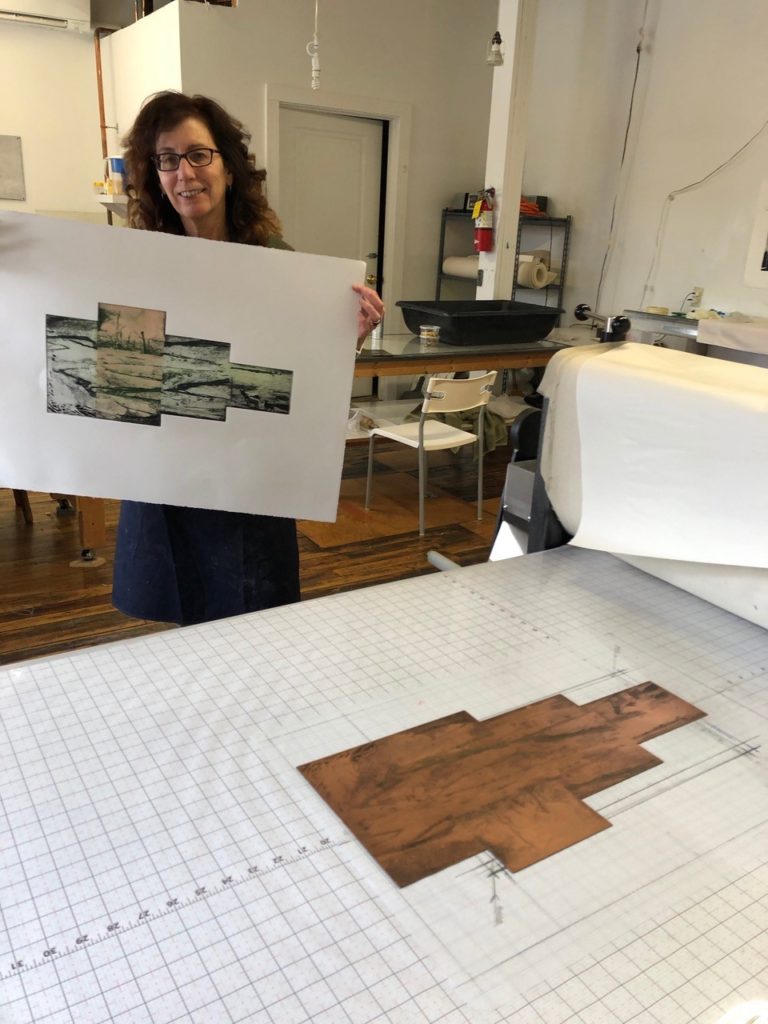
Many thanks for all of your help and support.
Robynn

